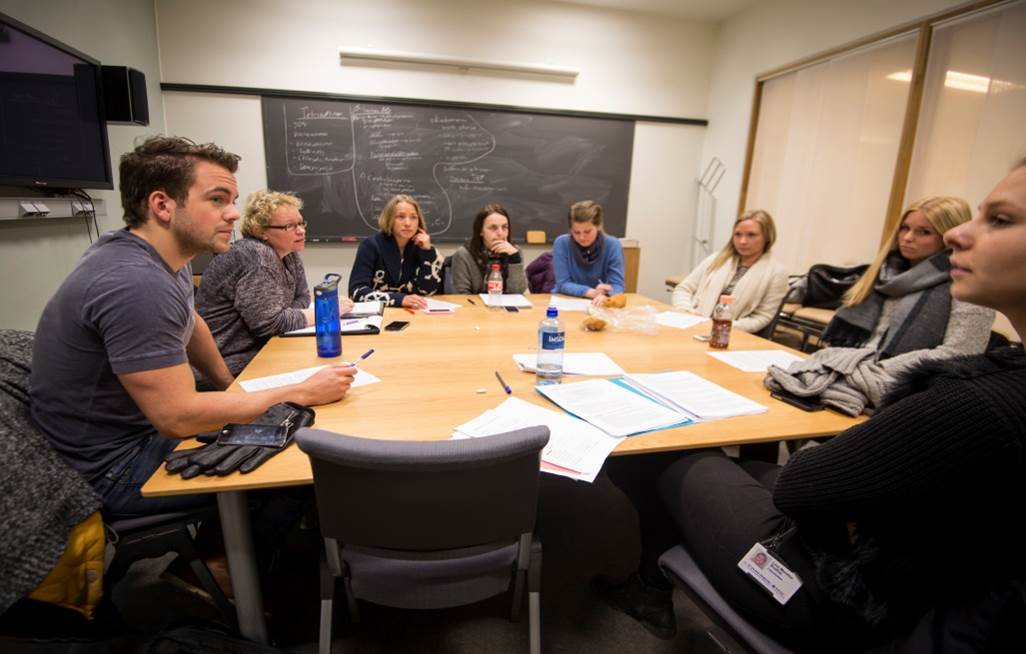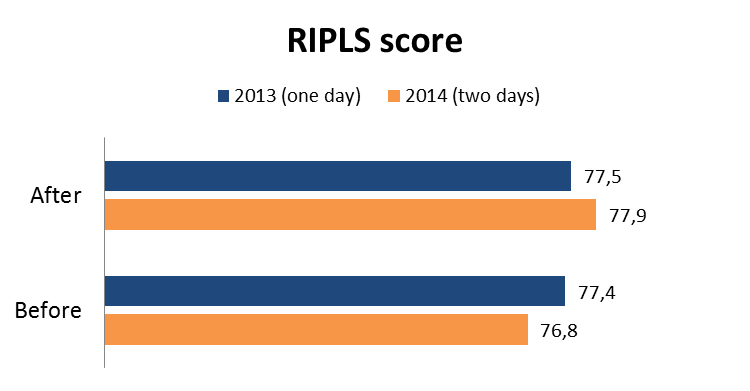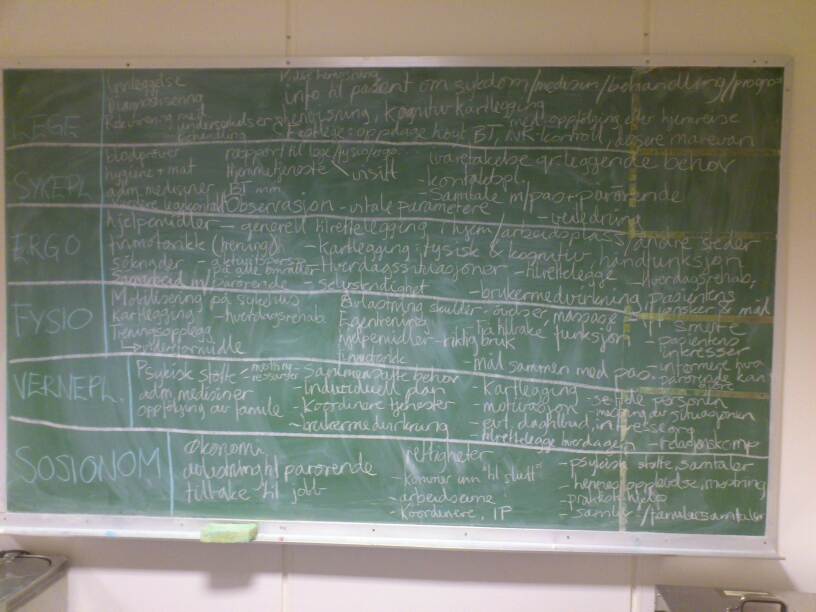
|
Authors | Institution |
|
Steinsbekk Aslak |
Norwegian University of Science and Technology |
 |
|
||||||
| One or two days of learning integrated care? |
As part of a strategic initiative from organisations  involved in health care delivery, research and education in in Central Norway, an educational activity where all the 3rd year students from different professions meet has been developed.
involved in health care delivery, research and education in in Central Norway, an educational activity where all the 3rd year students from different professions meet has been developed.
The theme is “Competency in Integrated care across professional disciplines”, and the aim is to increase the students’ awareness of each other’s profession and knowledge about integrated health care.
Aim
The aim of this study was to describe the students’ Readiness for Interprofessional Learning Scale (RIPLS) and satisfaction with a one day version conducted in 2013 and a two day version conducted in 2014.

RIPLS score
In 2013 their total RIPLS score was 77.4 at the start and 77.5 at the end. In 2014 this was 76.8 at the start and 77.9 at the end.
Students from medicine and bioengineer had significantly lower score in 2014

Statisfaction
The students overall satisfaction was 7.4 in 2013 and 7.1 in 2014.
Students from occupational therapy were most satisfied and students from medicine least satisfied.
The students rated both the one and two day versions as very successful. There was a higher change in RIPLS score in the two day version.

A total of 600 3rd year students from medicine, nursing, social work, physiotherapy, occupational therapy and social education (welfare nursing) took part in 2013. 700 students also including students from bioengineer and radiograph took part in 2014.
Students were asked to rate RIPLS bot at the start and the end and their overall satisfaction on a 0 to 10 scale at the end.

Picture of a blackboard where the characteristics of the differenet professons are described
Learning to know other professions was clearly rated as the most valuable experience.
Students really enjoy meeting each other, making the heavy burden of practical work worthwhile.
The work is presented on behalf of the working group.
 Send Email
Send Email
